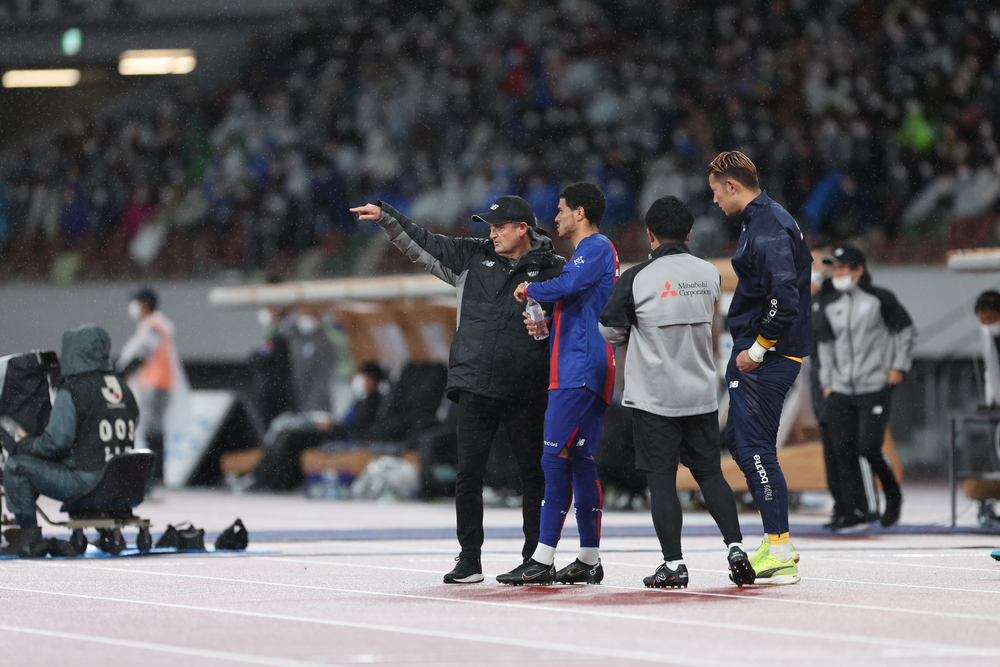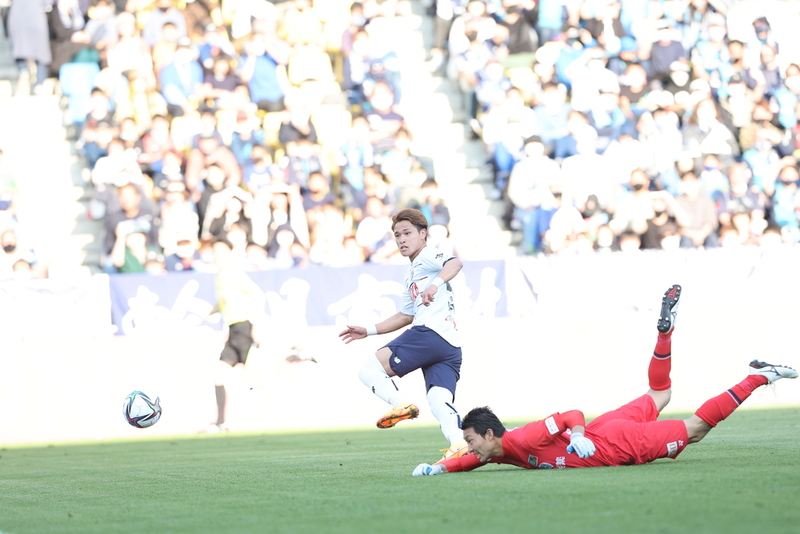"Tactics are born from excellent positioning."
What is positional play?
As we approach the match against Sagan Tosu on May 8th, a difficult challenge has come up. In order to depict this "positional vs. positional" battle, we have gathered the voices of midfield players and are attempting to unravel the current state and future of this new style.
First of all, let's clarify what "positional play" is. This is a concept that originated in the world of chess. It is a way of thinking about how to control which area of the board and ultimately checkmate, rather than just capturing or being captured by the piece in front of you. Hmm, it seems quite difficult.
But, if you think about it this way, it's much easier. Just think of it as that strategy I came up with when I was a kid, desperately trying to beat the chess master in my neighborhood. It's that move where you let them take your pawn in the beginning, and then you sneakily capture their queen when they least expect it. To understand that, there's a special movie you should watch.
It's the movie "Searching for Bobby Fischer" based on the true story of chess player Josh Waitzkin's childhood. The film depicts the growth story of a boy who learns the attack and defense, fun and difficulty of chess from two different coaches. Larry Fishburne, known for his role as Morpheus in "The Matrix", is incredibly cool, and the depth of love from Joan Allen, who plays the mother, is touching. If your child is passionate about something, I think this is a movie that parents should definitely watch. There are still many things to talk about, but there are words left by the Brooklyn-born player, whose name is also in the title of this movie.
"Tactics are born from excellent positioning."
This famous quote from Bobby Fischer is known as a phrase that represents the concept of positional play. It involves manipulating pieces on the board, taking into account their individual characteristics and three advantages - numerical, qualitative, and positional - in order to plan a strategy that will lead to checkmate several moves ahead. In soccer, this translates to utilizing the players' strengths and three advantages to change their positions and aim for the goal. Therefore, the way a team plays and their team design will vary greatly depending on the characteristics of the players on the team.
So, what is the positional play of the capital club that we aim for with coach Albert PUIG ORTONEDA? Looking back on the progress since the start date, it is necessary to mention the various experimental player selections that were carried out in the pre-season practice matches. Among them, there was a player who was tried as a "false number 9" and another example was converting Ryo Watanabe to a side back. It can be said that after such tests, the current main players have settled down.

From here, we will delve into the discussion of specific play models using the words of midfielders Takuya AOKI, Shuto ABE, and Kuryu MATSUKI. Aoki testifies to the actual image of the style that Coach Albert aims for.
"After listening to what the coach has been asking for since the camp, it was a very simple thing, so it didn't feel difficult."
What you need to understand is that what Coach Albert is conveying to the players is not difficult at all, but rather very simple. The attack is based on the triangle relationship, but the diamond formation (a combination of four players forming a diamond shape with the ball at the top of the triangle) is also important. From there, they repeat the post-play of hitting and dropping the ball, always delivering the ball to forward players and advancing the entire team. The ideal strategy is to move the ball from the side and push the opponent into their own territory. Matsuki says, "The most important thing is what the coach often says, which is to easily drop the ball with one touch if you are in a situation where you can't see ahead. Many things are very simple, so we play soccer while thinking about each one."
On the other hand, there are still many instances where the tempo of the game is not accompanied and the player cannot escape from the enemy's pursuers during the game. Therefore, we use medium to long distance passes to avoid the opponent's press. Aoki says, "When it inevitably becomes an outside pass, there is a position where we can get caught (by the opponent's press). When that happens, I want the two center backs behind to be in a position where they can pick up the second ball when we send a long ball to the two inside halves. I think it would be great if we could change our standing position more smoothly when we go to pick up the ball after kicking it and when we connect from behind."
And here, Abe says, "I am aware of participating in build-up when the ball is in our own half, but I am also conscious of not falling too much when jumping out from the second row after the ball crosses the half-line. I am also aware of my position where I can aim for the space behind and receive a drop from the forward." He adds, "This is the basic structure and current situation of build-up."
The defensive strategy will vary depending on the opponent, but the ideal is to immediately regain possession. The team's ability to switch between offense and defense and their strength in challenges remain unchanged. That's why Abe says, "Basically, we want to continue applying high pressure and using short counters. When we are in our own half, we want to avoid setting up a block like Hasegawa did. The coach doesn't like that, so we want to maintain a situation where someone is constantly attacking the ball. In that case, I am conscious of either myself or Kuse coming out."
On the other hand, there is also a defensive strategy where both wings cut outside and try to lure the opponent towards the center to intercept. In that case, the three tasks in the midfield are also numerous.
"When we go for the outside cut, the wing will leave the opponent's side back (SB) and go for the press. So, we have to cover the opponent's SB. Also, because Tokyo's front line has very fast players pressing, the opponent gets flustered. So, it depends on how many balls we can recover inside. We predict the opponent's line of sight and where they will pass. We aim for the interception first, and then me and Shuuto move forward and Takuya collects the ball. But we try to defend in a way that doesn't make Takuya move too much." (Matsuki).

Every position requires strength and stamina in both offense and defense. It can be said that the optimal solution found by Coach Albert from the start until now is strongly reflected in the selection of the members. That is why it should be understood that Abe and Matsuki, who have been working symbolically up to this point, are the first choice for the inside half position.
Smoke started coming out of my head, so this is the end of the first part.
In the second part, we will delve deeper into the checkmate, or how to score a goal, and the future considerations through comments from three players. This may be a spoiler, but I believe Fischer's famous quote "Tactics arise from superior positioning" and Josh's growth in the movie will be the key.
Text by Tadashi BABA (Freelance Writer)

![Unraveling the Albert PUIG ORTONEDA's positional play through the testimonies of three midfielders [Part 1]](/en/upload/Tokyoism/images/detail_img_223_6270be76-27b4-4892-a582-4bd20a000292.jpg)




![Unraveling the Albert PUIG ORTONEDA's positional play through the testimony of three midfielders [Part 2]](/en/upload/Tokyoism/images/img_224_6270bfd6-9f40-4212-9123-15390a000292.jpg)